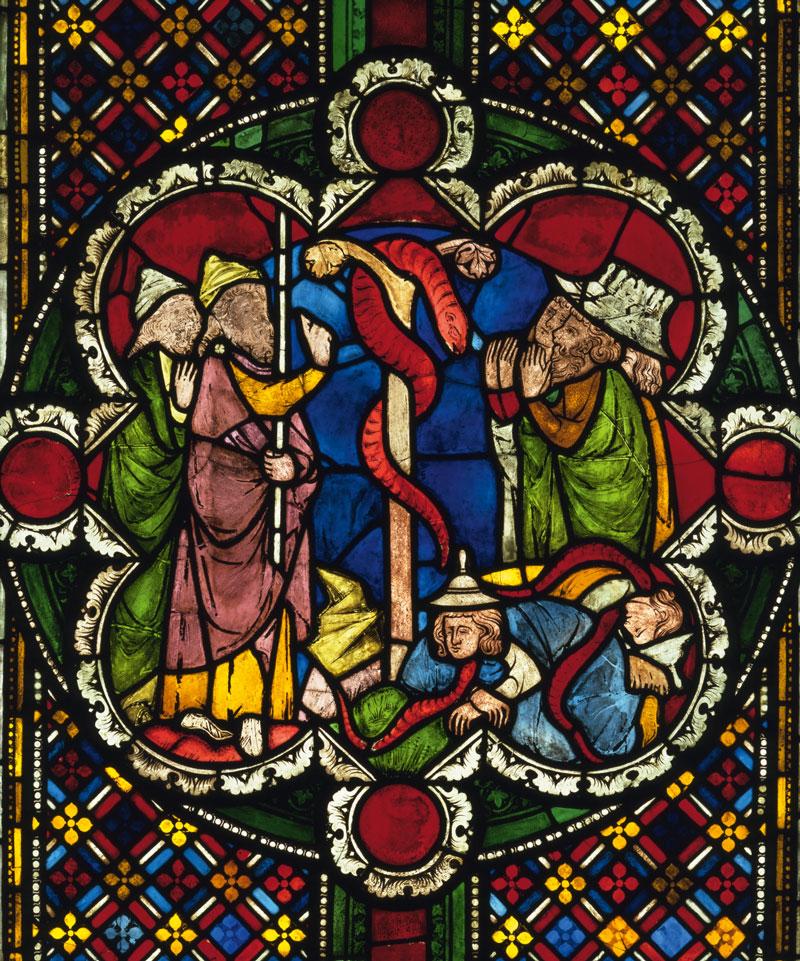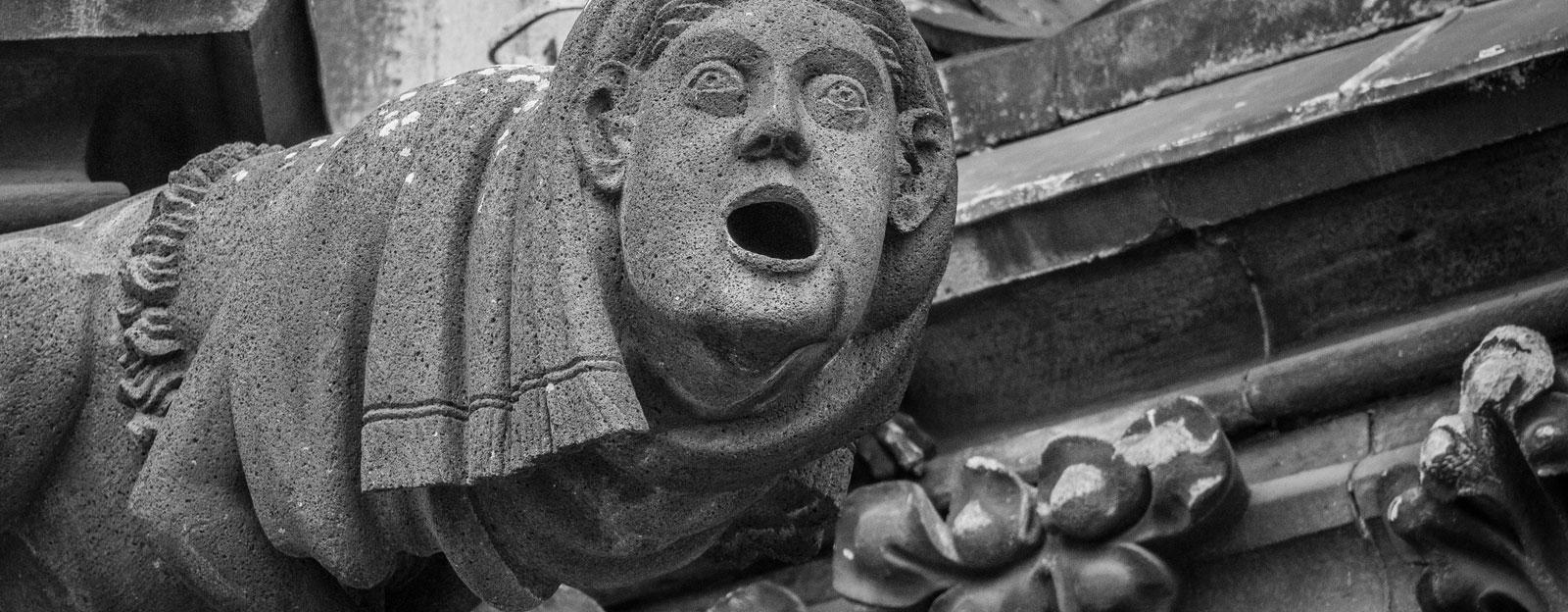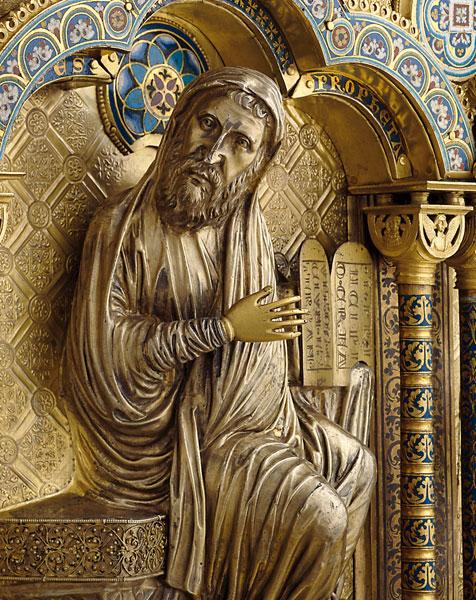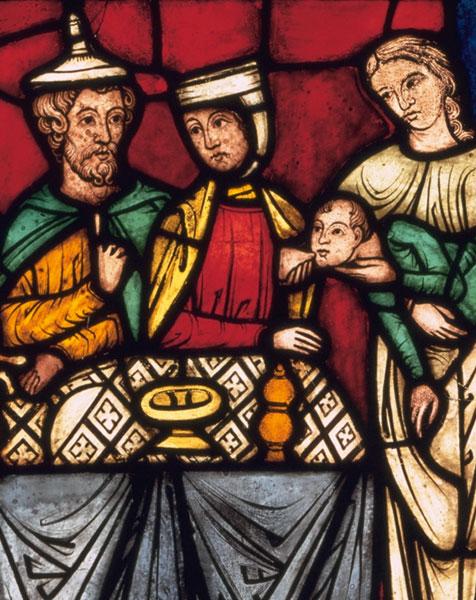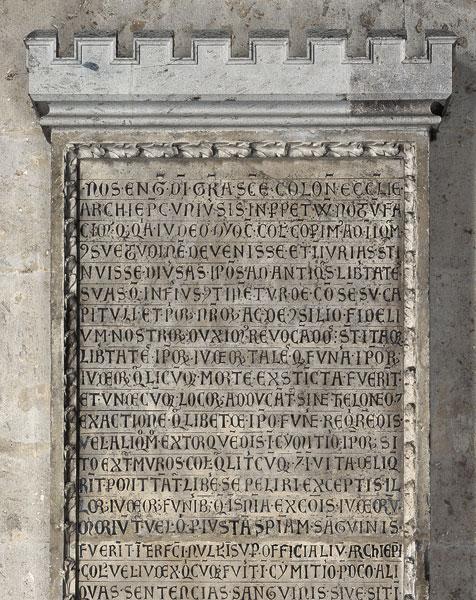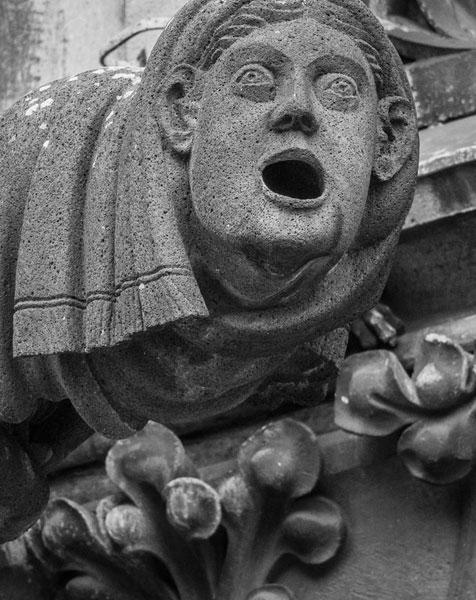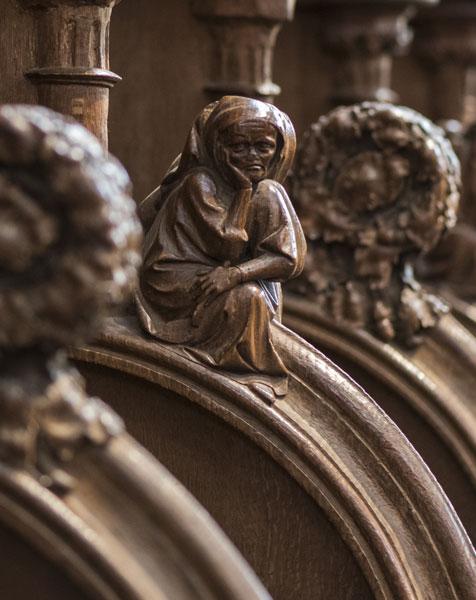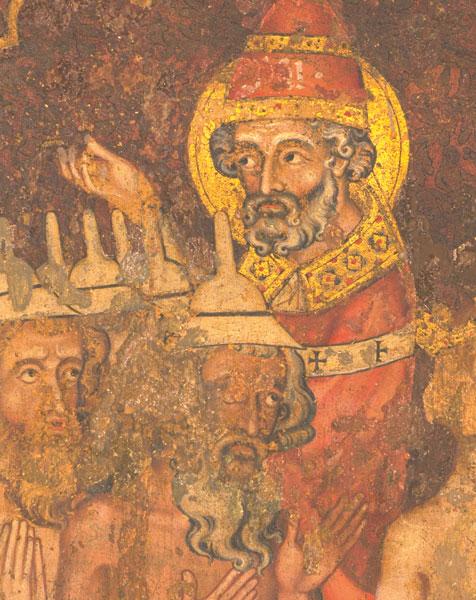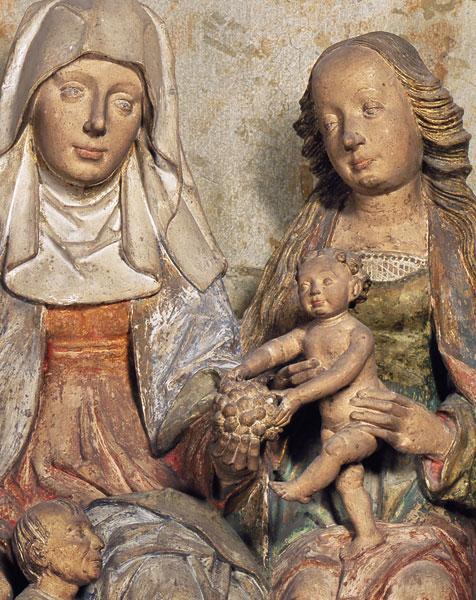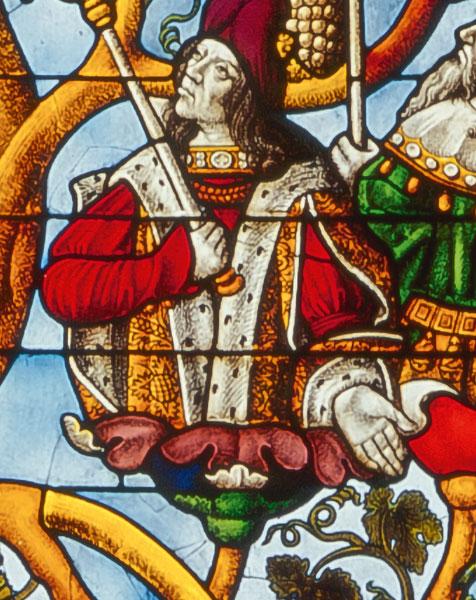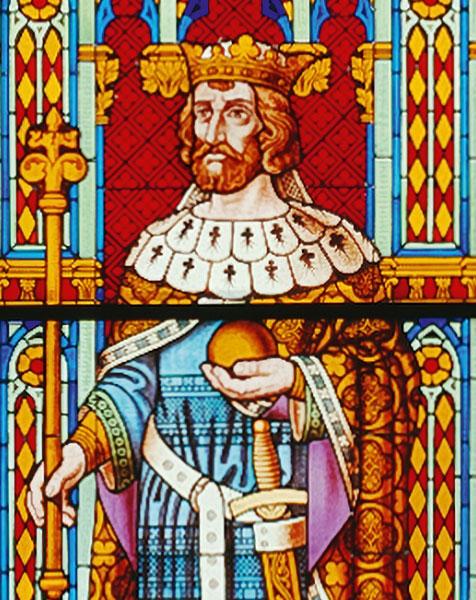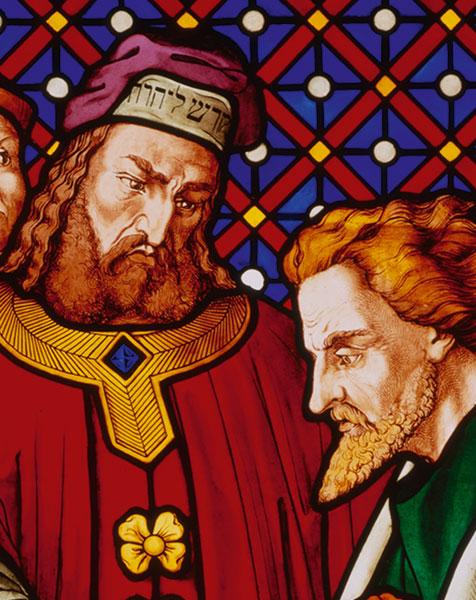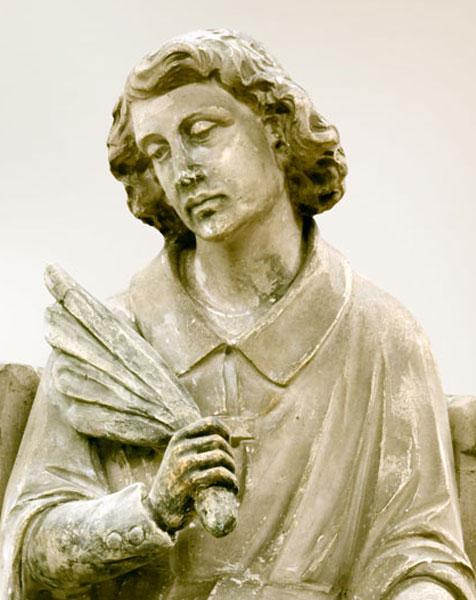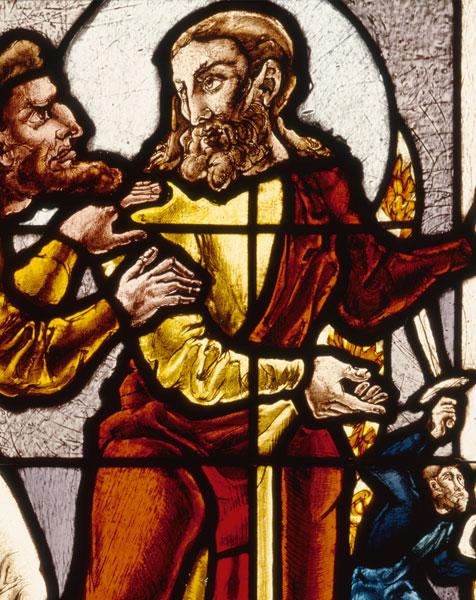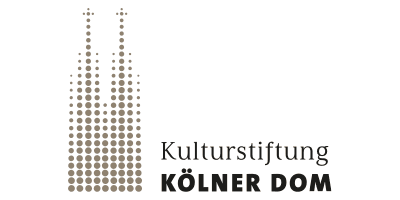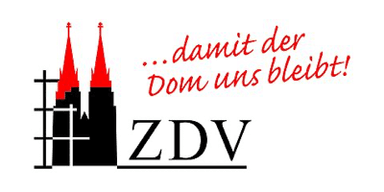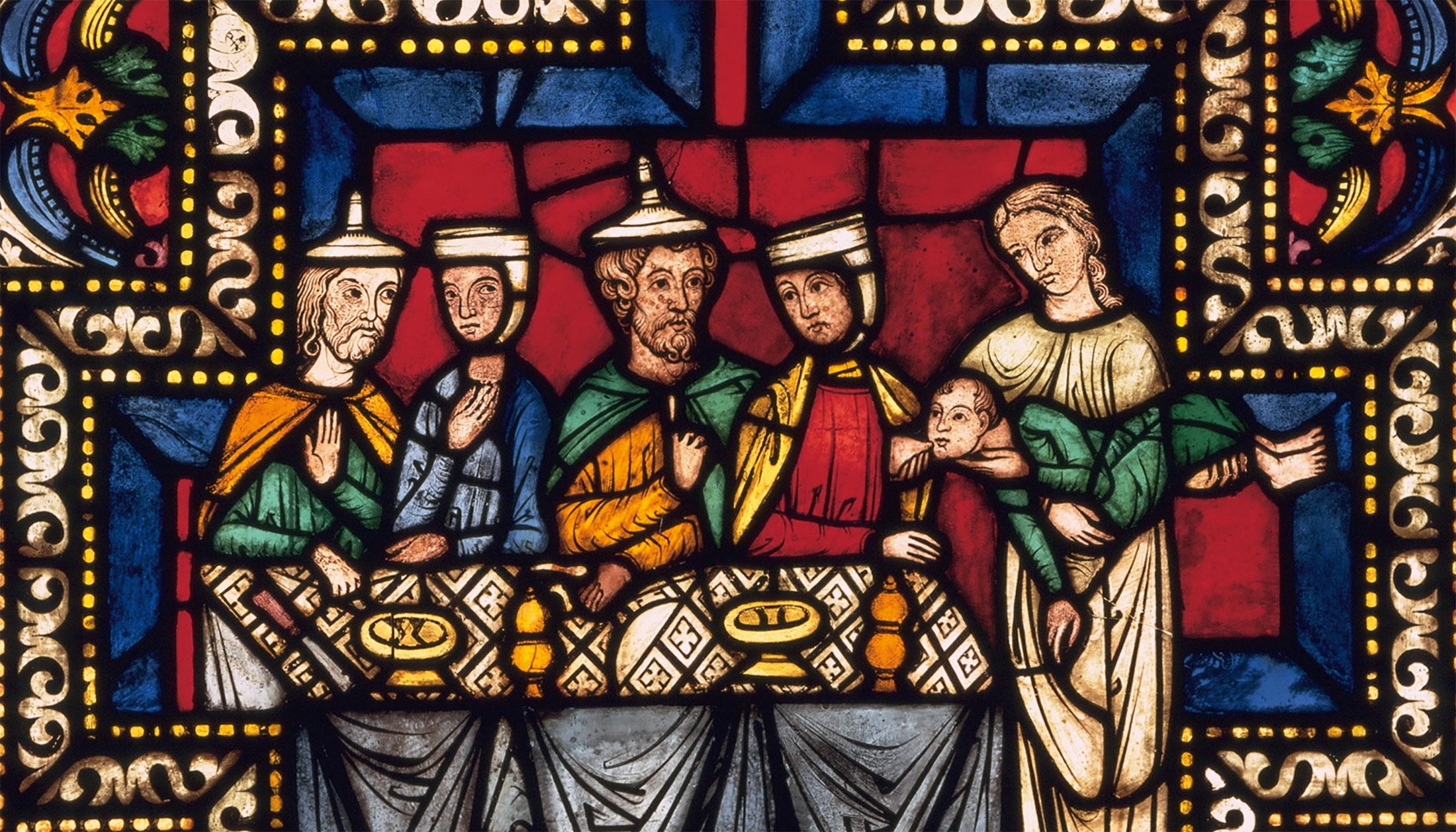
Cologne Cathedral and 'The Jews'-The later Bible window
A window that dates from sometime around 1280 and is closely related to the earlier Bible window has been in the Chapel of St Stephen since 1893.
This window was originally located in the choir of the Dominican Church that was demolished in 1804. Dominican polymath Albertus Magnus (Saint Albert the Great) paid for the construction of the choir in the 1270s. The window, which was completed after Albertus Magnus' death in 1280, was donated by the saint and Siegfried of Westerburg, archbishop of Cologne (1275–1297). Although the image of the donors and the relevant inscription have been lost, they are described in surviving documents.
As in the earlier Bible window, scenes from the Old and New Testaments are typologically set opposite one another. Here too, scenes from the life of Christ are linked to the image of the Tree of Jesse. Unlike on the shrine of the Magi and in many other images dating from this period, the thugs in the panels depicting the Passion of Christ are not portrayed as Jews. This means that the emphasis here is not on the frequently made allegation of deicide.
Albertus Magnus had an ambivalent relationship with Judaism. On the one hand, he studied the works of Jewish thinkers and philosophers; on the other, he and other professors signed the Charter of the University of Paris of 15 May 1248. This was a decree that condemned the Talmud, one of the most important texts in Judaism, as heretical and led to the confiscation and burning of several copies of this and other Jewish texts.
Matthias Deml
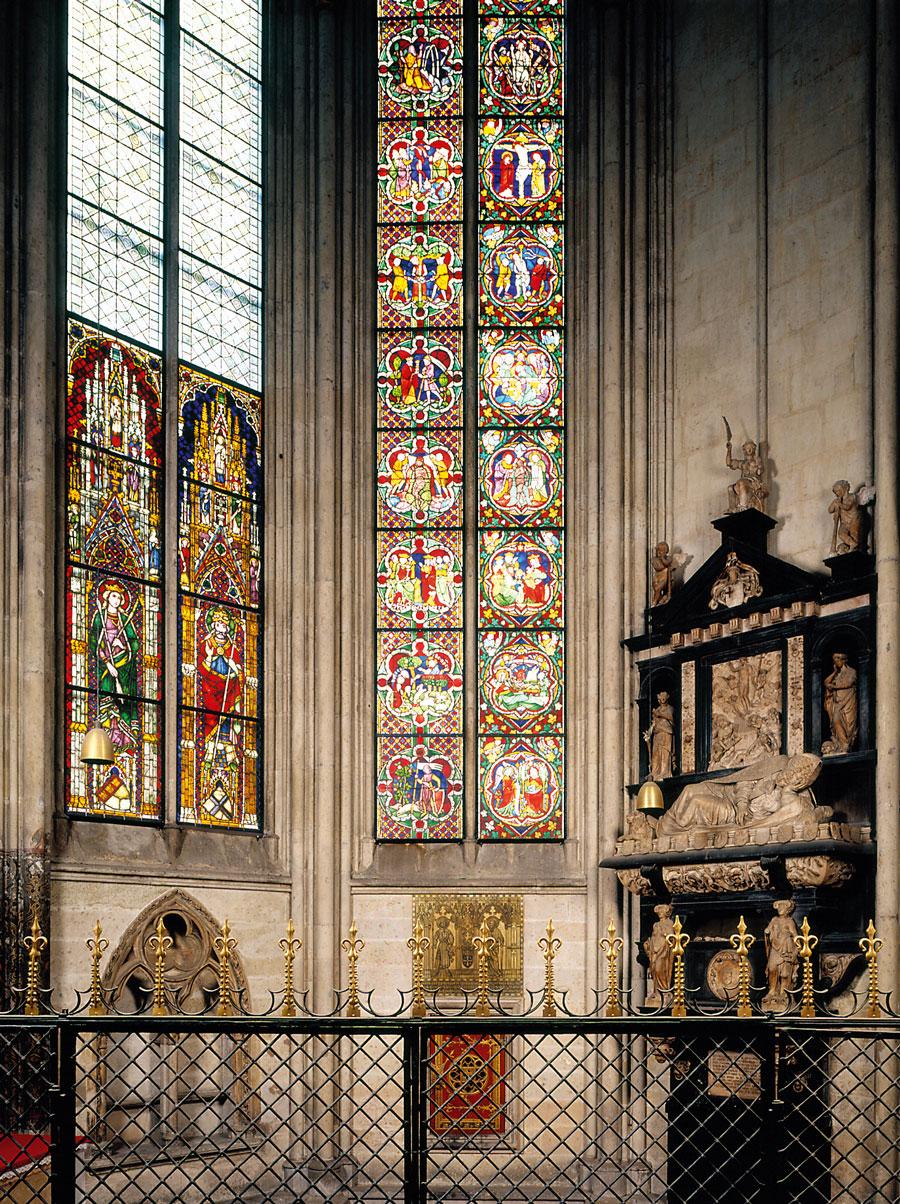
The only figures wearing Jewish hats in the later Bible window are in the image depicting the adoration of the bronze serpent (Num. 21: 6–9). The hats identify these figures as Israelites. According to the Bible, anyone who was bitten by a snake and looked at the bronze serpent, lived. The bronze serpent is a type for the elevation of Christ on the cross.


